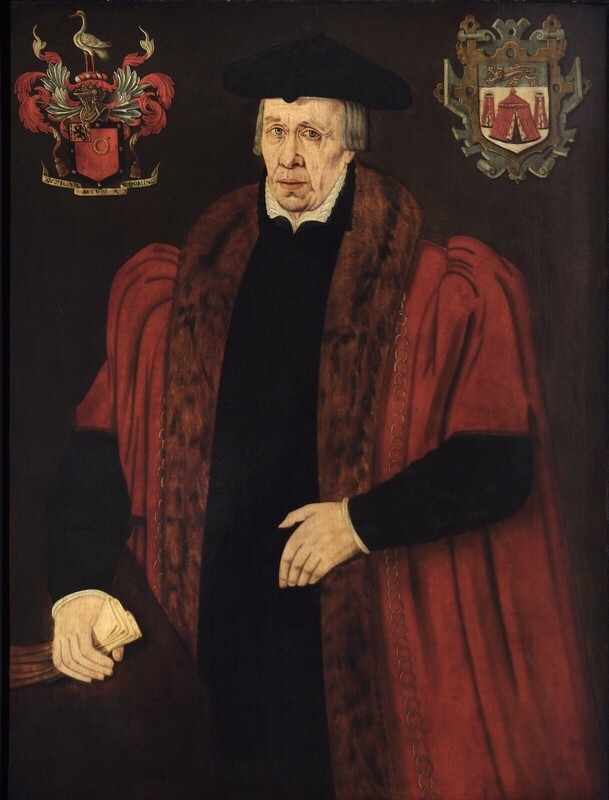
Historian and CovSoc member, Peter James, tells us the history of one of Coventry’s most important benefactors and his ongoing influence. Peter writes ……..
Early Life
Thomas White, born in 1492 in Reading, Berkshire the son of William White a prosperous clothier moved to London at a young age. Thomas began his apprenticeship with Hugh Acton a respected Merchant Tailor at the age of twelve. When his master died Thomas inherited £100 which was a significant sum in those days. In 1523 his father passed away also leaving him money enabling him to establish his own business. Through hard work and keen business sense he rose to become a leading figure in the Guild of Merchant Taylors, eventually serving as its master.
Civic Duty and Honours
White’s dedication to public service was evident throughout his life. In 1546 he was appointed Sheriff of London and in 1553 he reached the height of civic achievement as Lord Mayor of London. That same year he was knighted by Queen Mary I recognising his important role in quelling Sir Thomas Wyatt’s rebellion.
Philanthropy
Sir Thomas White is best remembered for his extraordinary generosity. In 1542 he made his first major charitable gift of £1,400 to the City of Coventry. This endowment was used to purchase land, with the rental income supporting gifts for the poor and providing loans to young freemen. His benevolence extended beyond Coventry to other Midland towns such as Leicester, Northampton, Warwick and Nottingham.
In 1555 White secured a licence to found St. John’s College, Oxford an institution that continues to thrive today. He also played a key role establishing the Merchant Taylors School in 1561.
Later Years
Despite his earlier prosperity, a downturn in the cloth trade left him a man of modest means in his later years. He died in Oxford on February 11th 1566 at the age of 74 years and was laid to rest in the chapel of St. John’s College.
His legacy endured long after his death. An Act of Parliament in 1846 allowed the Sir Thomas White Charity to sell a parcel of land in Chapelfields, Coventry, for £3,751 to support local development and provide homes for watchmakers. The triangle of land was bounded by Hearsall Lane, Old Birmingham Turnpike Road and Craven Street. The area was carefully planned, with covenants regulating building heights, distances from the street and garden layouts. It took nearly thirty years for the neighbourhood to be fully developed and houses fully occupied.
Memorials and Modern Influence
In 1883 a striking memorial statue of Sir Thomas White crafted from Cornish granite and Sicilian marble was unveiled on Greyfriars Green.
The early twentieth century saw the Chapelfields area expand with one road Sir Thomas Whites Road named in his honour. Local covenants continued to shape the community, even forbidding the establishment of fried fish shops. In the1950s one enterprising trader with an entrepreneurial spirit did sell fish and chips. He parked a mobile catering van on a piece of waste land at the junction of Allesley Old Road and Four Pounds Avenue.
At this time Four Pounds Avenue was just a track between Allesley Old Road and Holyhead Road. There was a wooden footbridge for pedestrians crossing the River Sherbourne with cyclists having to dismount. It was 1956 before Four Pounds Avenue opened with a tarmac surface and a road bridge capable of coping with motor vehicles.
